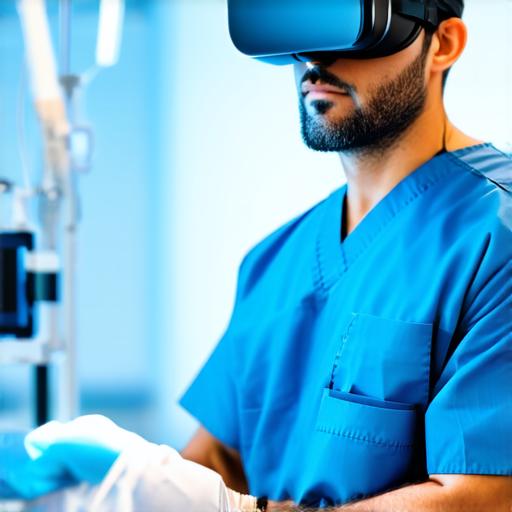Virtual reality (VR) technology is revolutionizing various industries, including healthcare. It has already shown great potential in improving patient outcomes and enhancing clinical workflows. In this article, we will explore some of the key advantages of using VR in the medical field.
1. Improved patient experience

One of the most significant benefits of VR technology is its ability to enhance the overall patient experience. By providing a more immersive and engaging environment for patients, VR can help to reduce anxiety and pain levels during medical procedures. This can lead to faster recovery times and improved patient satisfaction.
For example, VR can be used to create virtual environments that simulate surgical procedures or other medical treatments. Patients can practice these simulations before their actual procedures, allowing them to feel more comfortable and confident going into the operation. Additionally, VR can be used in physical therapy sessions to help patients with chronic pain or mobility issues improve their range of motion and reduce discomfort.
2. Enhanced clinical workflows
VR technology has the potential to streamline many aspects of healthcare delivery, from diagnosis to treatment. By providing doctors and other healthcare professionals with a more immersive and interactive tool for visualizing patient data, VR can help to improve diagnostic accuracy and reduce medical errors.
For instance, surgeons can use VR simulations to practice procedures before performing them on actual patients. This can help to reduce the risk of complications during surgery and improve overall patient outcomes. Similarly, VR can be used in emergency departments to help doctors diagnose and treat patients more quickly.
By providing real-time data visualization, VR can help doctors make more informed decisions about treatment options, leading to better patient outcomes.
3. Improved surgical precision
One of the most significant advantages of VR technology in the medical field is its ability to improve surgical precision. By providing surgeons with a more immersive and interactive tool for visualizing patient anatomy, VR can help to reduce the risk of complications during surgery and improve overall patient outcomes.
For example, VR can be used to create virtual simulations of surgical procedures, allowing surgeons to practice these procedures before performing them on actual patients. This can help to improve surgical precision by giving surgeons a better understanding of patient anatomy and reducing the risk of complications during surgery. Additionally, VR can be used in real-time during surgery to help doctors visualize patient anatomy and make more informed decisions about treatment options.
4. Reduced healthcare costs
Virtual reality technology has the potential to reduce healthcare costs by improving efficiency and reducing waste. By providing a more immersive and interactive tool for healthcare professionals, VR can help to reduce medical errors and improve overall patient outcomes. This, in turn, can lead to reduced hospitalizations, shorter stays, and faster recovery times.
For example, VR can be used in emergency departments to help doctors diagnose and treat patients more quickly, reducing the need for expensive hospitalizations. Similarly, VR can be used in physical therapy sessions to help patients with chronic pain or mobility issues improve their range of motion and reduce discomfort, reducing the need for costly medical procedures.
5. Increased accessibility
Virtual reality technology has the potential to increase accessibility to healthcare services by providing remote care options. By allowing doctors and other healthcare professionals to interact with patients remotely, VR can help to improve access to medical care in underserved areas and reduce the burden on healthcare systems.
For instance, VR can be used in telemedicine sessions to allow doctors to diagnose and treat patients remotely. This can help to increase access to medical care in rural or remote areas, where healthcare services may be limited. Additionally, VR can be used in virtual reality therapy sessions to provide patients with mental health care from the comfort of their own homes.
Conclusion
Virtual reality technology has the potential to revolutionize many aspects of healthcare delivery.
